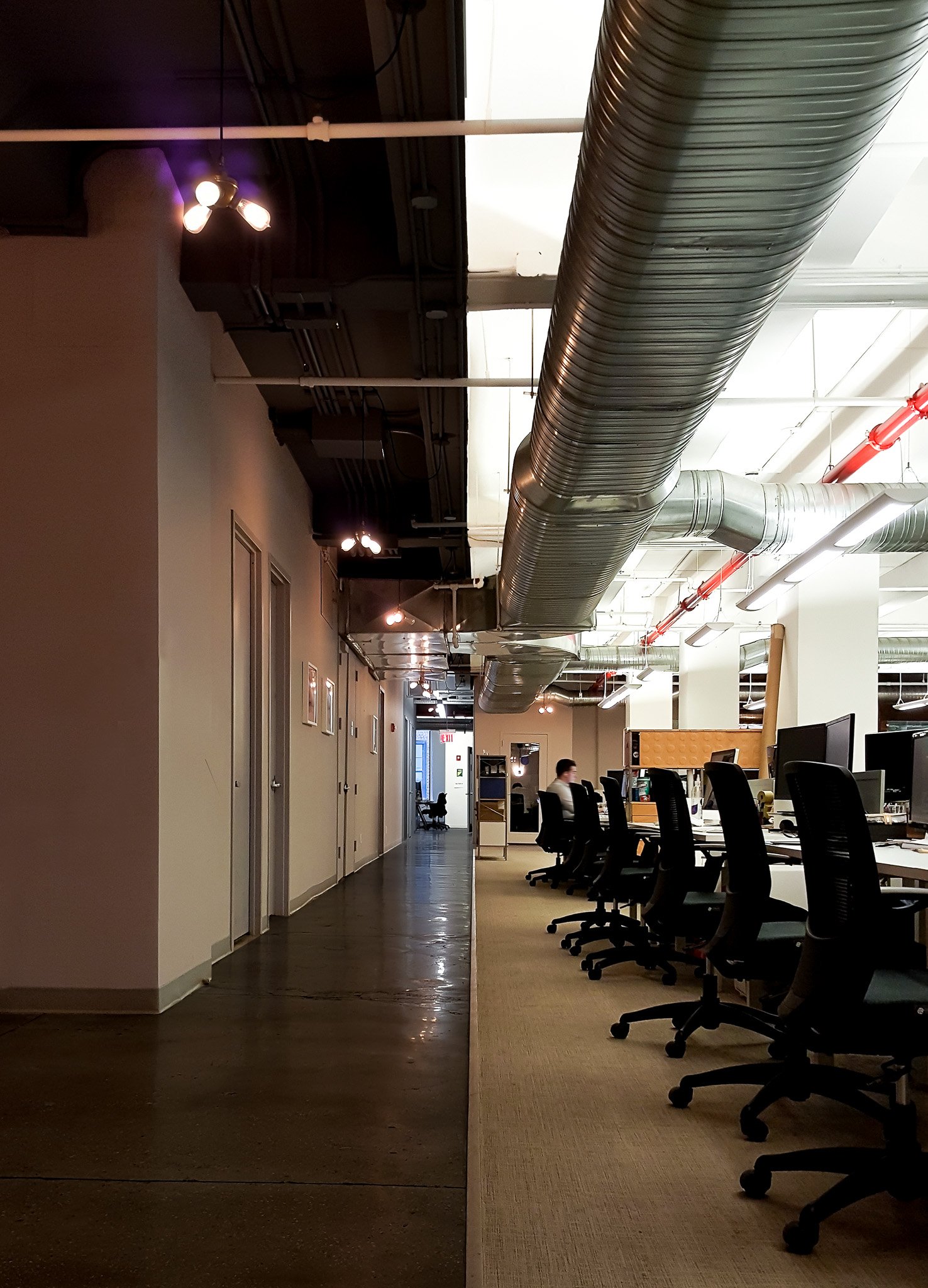Wellness: Lighting Design
Whether it is taking advantage of natural light or laying out artificial light, both play an important role in being able to occupy and use a space as intended. The difference after working at your desk for a few hours in well-lit environment is tremendously different that working in a dimly lit area, including increased eye strain and headaches. Similarly, if you have sunlight directly in your face or glaring off your screen, that too can be detrimental to productivity.
Top-down lighting design generally looks at three types of lighting; ambient, accent, and task lighting. Each serves its own role especially when you are setting up different types of spaces. Simply, ambient light provides an even light level within a space so you can navigate and use the space, accent lighting highlight important areas like a specific piece of art, and task lighting provides a focused practical light on areas with an intended function.
Designing a well-lit space is achieved by using these types of lighting where they are appropriate as well as how they interact with each other. Another crucial aspect of lighting is artificial versus natural lighting, in how to use it and when.
Overhead fluorescent lights are an efficient ambient light for offices, but a picture window with open slats will be a more comforting ambient light at home. If you would like to show off a piece of art, like a painting you would be better using a pin light where a skylight would be better served for a sculpture that won’t be as damaged by UV lighting. For task lighting, most people’s first thought may go to desk lamps, but task lighting extends beyond the workplace such as using an open window to help painting a portrait is an example of task lighting as well.
When considering what kind and source of light to use, its important to remember that artificial lighting can provide more even, reliable, and color correct lighting whereas natural lighting provides a more relaxing environment. It’s also important to mention that natural light helps maintain our circadian rhythm and promotes healthy rise and tired cycles.
Without being exhaustive, this should give you the ability to understand the function of lighting throughout your spaces and what light you should use when creating your own environments. Keep us in your spotlight as we continue to illuminate another aspect of wellness in design, Air Quality, in our next article. For more information on how we can light your next project, reach out to us so we can keep the conversation going!



